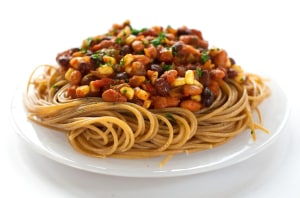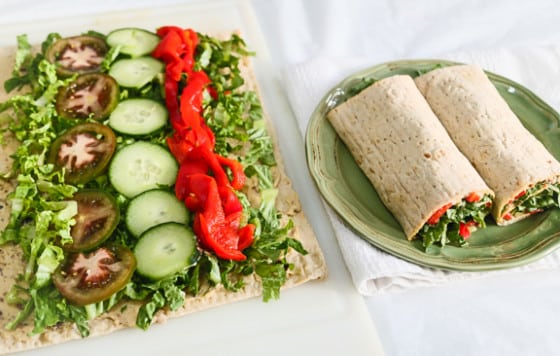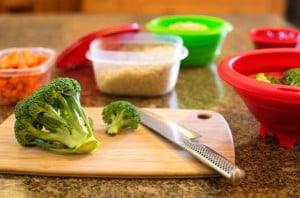
If you’ve ever been to a restaurant that serves edamame as an appetizer, then you know how addictive those little green treasures can be. You may have even embarrassed yourself by scarfing them down faster than anyone at the table. Although the name “edamame” sounds pretty fancy, it’s just another way of saying steamed or boiled green soybeans still in their pod. Most of the time, they are served with salt to further enhance their deliciousness.
Although edamame is 100 percent plant-based and full of fiber, protein, and vitamins and minerals, many people shy away from soy. But these legumes have some fantastic health benefits that are worth giving them a second chance. Here are nine surprising benefits of edamame and some tasty ideas for enjoying them.
What is Edamame?
Edamame is a Japanese term that translates to “unripened green soybeans still in their pod.” They are harvested before they ripen or harden and are enjoyed by people all over the world as a tasty snack or in main dishes. You can buy them fresh, frozen or dried.
Because they are a complete protein, edamame is a vital source of protein for people who follow plant-based diets. A complete protein contains all nine of the essential amino acids. They are usually found in animal-based foods, but edamame is one of the few plant foods that includes all of them. Quinoa is another good example. Edamame is also gluten-free, low in calories, and high in iron and calcium.

One cup of frozen edamame beans provides you with 10 percent of your daily recommended intake of calcium, 20 percent of iron, 16 percent of vitamin C, 121 percent of folate, and 52 percent of vitamin K. Here is a complete breakdown of its nutritional profile based on a one-cup serving:
- 188 calories
- 18 g of protein
- 8 g of fat
- 8 g of dietary fiber
- 13 g of carbohydrates
- 3 g of sugars
- 98 milligrams (mg) of calcium
- 52 mg of iron
- 99 mg of magnesium
- 676 mg of potassium
- 262 mg of phosphorus
- 5 mg of vitamin C
- 482 mg of folate
- 41 mcg of vitamin K
Edamame is also high in the protective plant chemical called isoflavones, which are a type of phytoestrogen that may have antioxidant properties. In fact, soy products are the most abundant source of isoflavones in the human diet. They have an estrogenic activity that binds to estrogen receptors within cells and may be able to reduce the risk of hormone-related cancers, such as breast, uterine, and prostate cancers. Isoflavones may also be able to enhance bone mineral density and blood lipid profiles, according to some studies.
Health Benefits of Edamame
Any food that packs as much of a nutritional punch as edamame is sure to contain a lot of health benefits. Here are nine that might surprise you.

1. May prevent age-related brain diseases
Plant-based foods are well known for promoting overall health, but research shows that populations who eat higher amounts of soy may be at a reduced risk of developing brain diseases later in life. A 2006 research published in the Environmental Health Perspectives journal found that both men and women who eat traditional Asian diets may be less likely to develop age-related brain diseases as well as depression.
Authors of the research believe that soy’s brain-protecting properties may be due to its high isoflavone content. One researcher stated that there had been work done on monkeys showing that soy modifies the metabolism of serotonin in a manner that might be useful for the prevention of depression. Serotonin is a neurotransmitter in the brain that helps make you feel happy. It is also believed to control social behavior, mood, sleeping and eating patterns, coping mechanisms, and cognitive function. One study supported this theory by finding that women who were given isoflavone supplements for six months performed better on a verbal fluency test than women who were given placebos.
2. May lower cholesterol
Edamame is a cholesterol-free food that might be able to prevent the buildup of cholesterol. Several studies have linked abnormally high amounts of cholesterol to an increased risk of heart disease. One study pointed out that high cholesterol is linked to an increase in death in most people over 60 years old.
Another study found that people who ate 47 grams of soy protein each day lowered their total cholesterol by 9.3 percent. Additionally, their LDL or “bad” cholesterol went down 12.9 percent. Finally, a study published in the journal Circulation recommended that eating 50 grams of soy protein each day lowers bad cholesterol by 3 percent.
The United States Food and Drug Administration (FDA) also supports the health benefits of soy on the heart. They recommend eating soy protein as well as a diet low in saturated fat to help prevent heart disease. When it comes to protein, soy might be different from other types. Unlike animal-based proteins, soy is high in fiber, vitamin K, and antioxidants, which may reduce heart disease by improving your blood lipid profile, according to some studies.
3. May help stabilize blood sugar levels

Even if you don’t have diabetes, it’s important to eat foods that keep your blood sugar levels in check. Despite being a legume, soy is relatively low in carbohydrates compared to other forms. It’s also high in fiber and doesn’t contain any added sugar, which may help send a steady stream of glucose to the rest of your body without spikes or dips.
Research shows that people who eat a lot of processed sugar are at an increased risk of developing diabetes. But edamame has a low glycemic index rating, and its high fiber content prevents excessive blood glucose dumping, meaning that it won’t spike blood sugar levels. It’s a great food to eat as part of a plant-based or low-sugar diet.
4. May help manage menopausal symptoms
Menopause occurs when a woman reaches the age when she stops menstruating. It usually happens around 51; however, this number differs for every woman. Symptoms may include hot flashes, mood swings, urinary incontinence, weight gain, bone loss, and changes in the breasts and skin. But several studies suggest that soy and isoflavones may reduce these side effects.
Interestingly, not all women respond well to the isoflavones in soy. You have to have the right type of gut bacteria. That’s because certain types of bacteria convert isoflavones into a compound that is believed to be responsible for many of the benefits of soybeans called equol. Research shows that if you have this type of gut bacteria that produce equol, then you may benefit from using soy to prevent menopausal symptoms.
One study found that women who took 135 mg of isoflavones per day for one week (or the equivalent of eating 68 grams of soybeans daily) reduced their menopausal symptoms, but only if they were equol producers. People in Asian populations tend to produce more equol than Westerners, and it might have something to do with the high intake of soy products in this area.
5. May reduce the risk of cancer

In addition to reducing menopause symptoms, soy foods may benefit women by reducing their risk of breast cancer. This is because isoflavones have estrogenic activity in the body, which means that they resemble estrogen by binding to its receptors located on cells all over the body. Some studies indicate that eating a high intake of soy may reduce the risk of breast cancer. Isoflavones in soy may also prevent breast cancer later in life.
Soy foods aren’t just good for women. They are also useful for men. Research estimates that one in seven men will develop prostate cancer at some point in their life. Afterall, it’s the second most common type of cancer that affects men. Luckily, several studies have shown that eating soy products such as edamame may reduce the risk of prostate cancer by 30 percent.
6. May support female fertility
The research is a bit conflicted on many areas of soy, and fertility is one of them. But one of the most significant studies to suggest that soy may benefit fertility was done on more than 116,000 female nurses between the ages of 25 and 42. The subjects were evaluated for the risk of developing chronic diseases. Results showed that the concentration rates of women who had higher intakes of animal protein had an increased risk of ovarian infertility. The researchers suggested that women add a serving of plant-based protein-rich foods including soy to their diet to protect against infertility.
One reason why researchers recommended the plant-based protein to increase fertility may have to do with the impact of soy on insulin release. Studies show that excess insulin in the bloodstream may cause hormonal disruption and ovulation problems. Some sources suggest that soy has less of an impact on insulin than animal protein.
7. May help fetal development
One thing many doctors recommend to women who are pregnant or who wish to get pregnant is to keep an eye on their folic acid levels. Edamame is high in folic acid, which is a type of B vitamin that helps boost brain health in infants. It may also help prevent the fetus from developing major problems in their spine or brain during development, such as neural tube defects like spina bifida and anencephaly.
The recommended amount of folate is 400 mcg for women over the age of 19 and 600 mcg during pregnancy. Women who are breastfeeding should aim for 500 mcg.
8. May prevent osteoporosis

Osteoporosis is a condition that occurs when the bones become weak and fragile. It usually happens in the older population and may increase the risk of falls or breaks. Bone density naturally decreases in women after the age of 35, and it occurs even more rapidly after menopause.
Soy isoflavones have been shown to decrease the rate of bone density loss and may even increase bone density during menopause. Additionally, soy is high in protein, which may help keep your bones healthy.
9. May boost energy
If you have a hard time feeling energized throughout the day, then it might be due to lack of iron. Feel cold all the time? That could be low iron, too. Even gastrointestinal disorders or heavy periods may cause low iron levels.
Edamame is high in iron, which is needed to control how well your body utilizes energy. Approximately 70 percent of your iron levels are located in your red blood cells. Their job is to transfer oxygen from your lungs to your tissues. It’s no wonder that you’ll feel fatigued if you don’t have enough of this crucial mineral.
How To Use Edamame
Don’t let the mystery of edamame prevent you from trying it. It can easily be eaten as a snack or incorporated into your favorite recipes. Meatless Mondays will never be the same. Even kids can’t resist these tasty little treats.

If you eat edamame at a restaurant, you’ll find that most people suck the beans out of the pods. The added salt makes it a tasty snack that you can’t stop eating. Making your own at home is easy. You can buy it fresh or frozen at most supermarkets. When you get it home, boil the edamame in a pot of salted water until the beans are tender. Once they are, drain the water and rinse if desired.
You can also steam the edamame for about ten minutes in an inch of water. Let them cool once they’re tender and sprinkle with salt before serving. You can eat them right from the pod or add them to salads. They make a great addition to rice or other grain-based dishes in place of meat if you’re vegan. They can also be made into hummus using a high-speed blender. Just be sure to boil the beans first to make sure they’re soft. For a Japanese inspired dish, add them to some noodles or miso soup.
The post 9 Surprising Benefits of Edamame appeared first on Bembu.
from Bembu http://ift.tt/2Eh9wIX



























